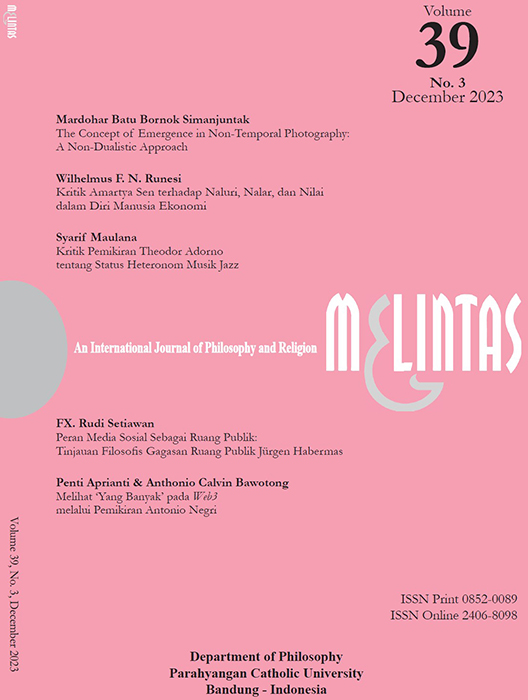Does time exist? Every time, humans imagine and try so hard that some certain events in their lives can be immortalised. It means longer happiness, continued prosperity, and romance that can always be enjoyed. The desire to record an event reflects the hope that life will become timeless. The parts of life that are full of suffering, on the other hand, want to be passed as quickly as possible. We are like creators of a measure called time, who then regret of what we have created, and now in vain want to erase it.
When we realise that time cannot be erased or corrected, we begin to criticise everything. There is a drive to prove that we are important in “this moment”. Maybe this awareness is better than remaining silent and resigned in front of a ‘mistake’ of creating the category of time. This edition of Melintas observes things in our time. The first article sees the problem of temporality in photography, that has invoked a continuous debate concerning the artistic nature of this medium. Previously taken as a different way of seeing, the time signature in a photograph became debatable along with the development of digital photography. The author concludes that the advancement of photography lies in its potential to pursue non-duality interactions. The second article observes how problems such as poverty, hunger, injustice and social inequality have not been resolved because policy makers are still trapped in the prison of strong desires. The author offers an interpretation and analysis of Amartya Sen’s thoughts regarding how reason should stem the urge to lust. Every policy will be correct if it has undergone critical rational testing. The third article seeks to pinpoint Adorno’s fallacies in his critique of jazz music, based on his failure to formulate the ontological aspects of jazz music which rigidly adhere to canonical forms, his inability to situate the potential of jazz music within autonomous art, and the distortions stemming from stereotypes about jazz music prevalent in his time. The fourth article is an analysis of social media and its potential role as a public space, using Habermas’ theoretical framework. Social media still has a big influence on democracy and social change. The author recommends that social media users need to have and to develop their social media literacy based on the principles of solidarity, criticality, and caution. The fifth article delves into how Web3 or Web 3.0 shows the tension between dominant currents and resistance to global multinational power systems. In this context, the authors use Antonio Negri’s perspective in Empire and Multitude to investigate the complex dynamics that occur, and situate the development of the internet within a more inclusive and equitable realm.
Sometimes we need to be critical of time. So far, time has been taken for granted to determine everything, including objectivity and rationality. Pausing in silence to analyse situations and experiences is a way to ‘stop’ time. We might not enter eternity, but we enter the essence of experience, a very real experience.
Editor.
Diterbitkan: 2024-03-22
